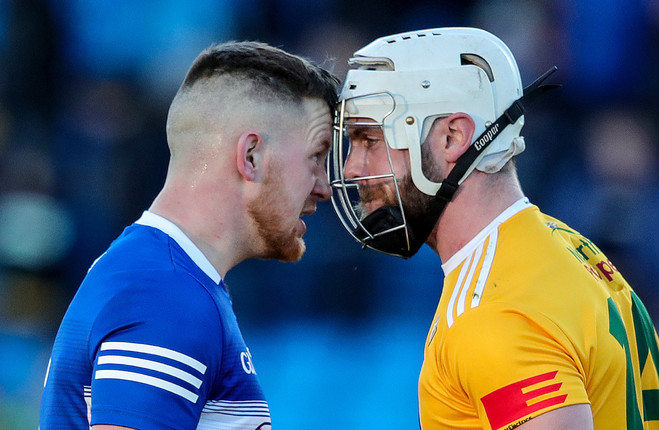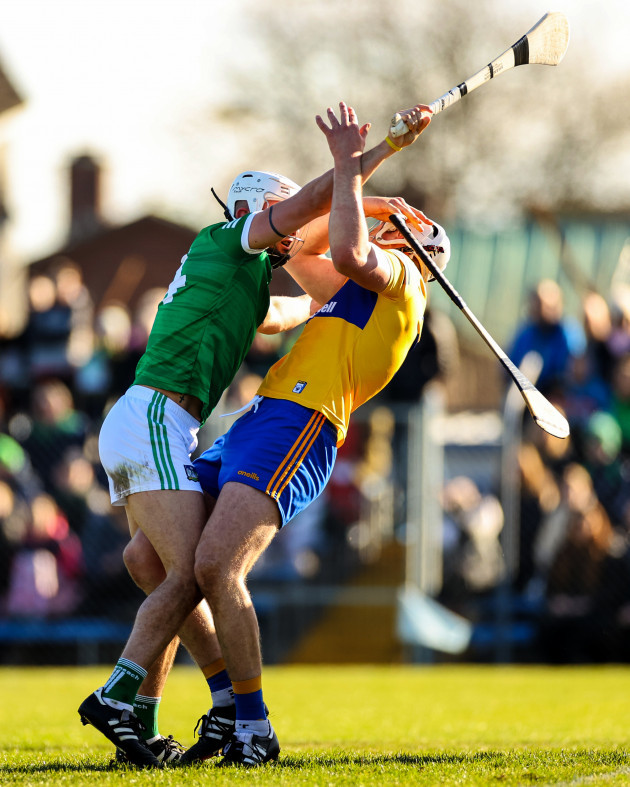HEADING INTO THE final round of Allianz Hurling League fixtures, there’s not a whole lot to play for in the top flight.
In Division 1A, Cork and Wexford clash with both counties already assured of their places in the semi-finals. It’s effectively a dead rubber and likely to resemble a challenge game.
Kieran Kingston and Darragh Egan will use it as an opportunity to rest some regulars and hand out game-time across their squads. The clash between mid-table sides Galway and Clare is another tie of little consequence.
At the foot of the table, Offaly need to beat All-Ireland champions Limerick to avoid an expected relegation play-off. Even though John Kiely’s men have failed to enjoy a win on their four outings to date, they’re expected to encounter little difficulty in overcoming the Faithful.
In 1B, Antrim’s defeat to Laois on Sunday means they’re certain to be involved in the relegation play-off. The other four teams (Waterford, Kilkenny, Dublin and Tipperary) are in the race to advance to the knock-out stages of the league.
However, it appears this might be a competition where nobody wants to reach the final given the two-week gap between the Division 1 decider and the start of the provincial round-robin championships.
“The league final is very close to the first round of the championship, which is something that teams are probably cognisant of,” remarked John Kiely in December.
Liam Sheedy is among the high-profile pundits calling for the league to scrap semi-finals and go straight to a final from 2023. He has a point and Croke Park may well decide to alter the competition once again.
The hurling league format has been tweaked regularly over the past decade, with the GAA unable to settle on an acceptable structure.
While some of the best Gaelic football games of recent years have taken place in the spring competition, the hurling league has been diluted beyond recognition.
The old hierarchy of having six teams in the top two tiers between 2012 and 2019, meant counties were almost going full throttle from the start of the year.
There was real jeopardy with six Division 1A sides keen to avoid relegation and the potential hangover that might cause in the championship. It threw up some classics between the big guns but managers started to complain that there were too few matches and the threat of demotion gave them little opportunity to trial new players.
As it transpired, they had little reason to fear relegation to Division 1B. In 2017 and 2018, the eventual All-Ireland champions Galway and Limerick played their league hurling in second tier, while three counties in Division 1B also won the league outright from 2015-17.
On any given year the old Division 1B had three weaker counties, so it gave managers of the top three the perfect mix of experimentation with two big games to target with their full deck. It provided the likes of Laois, Westmeath, Carlow, Offaly and Kerry with the opportunity to test themselves against the big guns and a couple of games against peer opponents.
The current structure where the top division was reconfigured to be split into two sections of six teams in each was introduced in 2020. It meant that heavy beatings to the minnows have become a regular occurrence in recent years.
The intention to give top sides more league matches effectively took away the threat of relegation from Liam MacCarthy counties.
Some counties, like Dublin and Wexford this year, target a strong league to build momentum while others were afforded the space to spread game-time around their panel without much jeopardy.
In the football league, no county hit the 30-mark for players used after the first three games, while four teams gave game-time to 30 or more players at the same stage in hurling. That shows the greater level of experimentation taking place in the small ball code in comparison with football.
As it stands football has a better league format and hurling’s championship structure is far superior.
The old hurling league format helped developing counties more than the current one, which greatly favours the strong.
The introduction of the round robin to the Munster and Leinster championships made things more complicated.
Now counties had extra games in the summer but it caused the league to drop in its importance.
The battle to find an ideal format for the hurling league has been an issue for the GAA over the past decade. Only three times in the last 10 years has it not undergone any changes: 2013, 2015 and 2018.
The old Division 1A and 1B format was introduced in 2012, but back then the top two sides in either tier contested finals to crown divisional champions.
In 2014, a relegation/promotion playoff was brought in for the bottom side in Division 1B, where they faced the Division 2A winners, who wouldn’t go up unless they won that game.
In Division 1A, the bottom two counties played off in a one-off game for survival in the top flight. The changes that year also saw the top four teams in Division 1A and 1B advance to contest Division 1 quarter-finals.
This saw the fourth place team in Division 1B regularly ship heavy beatings to the top Division 1A sides.
In 2017, the GAA removed the relegation/promotion 1B/2A playoff after criticism that it placed a barrier in front of Division 2A seeking promotion.
In 2019, due to the upcoming revamp of the leagues for the following year, there was no relegation from Division 1A. With another league format coming into the championship, teams could afford to take their foot off the gas in the league and experiment, which almost completely removed its competitiveness.
Covid hit in 2020, resulting in the top two teams in Division 1A and 1B going straight into the league final. The following year, the final wasn’t played due because Galway and Kilkenny did not meet in the championship and instead they shared the trophy.
In 2022 semi-finals were introduced for the top two teams in either division.
And perhaps 2023 will see the semi-finals scrapped in favour of going straight to the final. But that does little to help the plight of the weaker counties and will arguably lead to more dead rubbers and games of little consequence.
This will all be forgotten about once the provincial championships roar into life from next month, but more tweaking will be required to breathe life back into the hurling league.
First published today at 07.35


